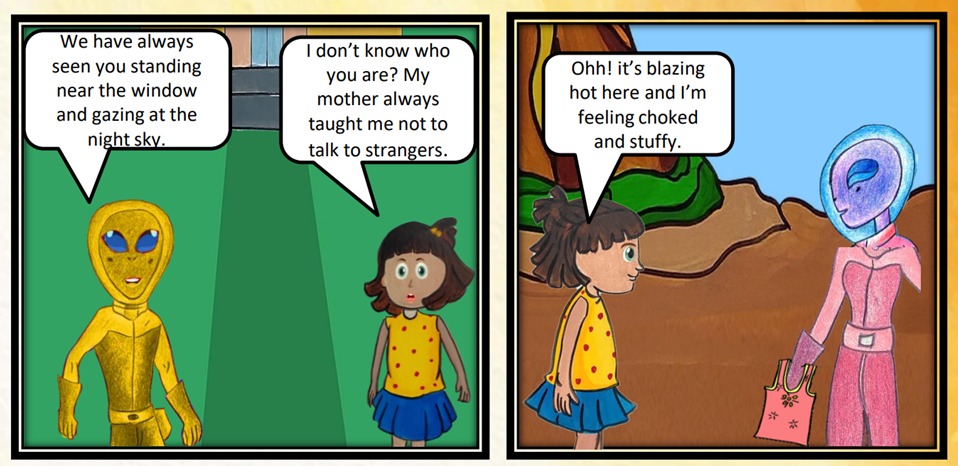Sandeep Sethi, Director of Education at Maharaja Sawai Man Singh II Museum Trust in Jaipur, is a visionary educator dedicated to fostering creativity in teaching. A product of Narsee Monjee Institute of Management Studies (NMIMS), with over two decades of teaching experience, he is renowned for his innovative approaches to education, particularly through theatre and exhibitions. Sethi has pioneered Education through Theatre, creating plays in subjects such as Accountancy, Economics, Business Studies, and Mathematics, even performing at the prestigious National School of Drama (NSD).
He has organized 25 exhibitions on Commerce subjects and is a leading advocate for using graphic novels as a pedagogical tool, collaborating with numerous schools to create 100 such novels. Currently, he is working on developing 300 graphic novels covering various educational boards’ curricula. Sethi’s expertise extends to mentoring teachers, conducting workshops, and developing creative teaching methods, earning him a reputation as a trailblazer in educational development.
In a captivating interaction with The Interview World, Sandeep Sethi illuminates the potential of comic books as tools for educational enrichment, emphasizing how they facilitate experiential learning and significantly deepen learners’ comprehension and knowledge. Below, we present the key insights from the conversation.
Q: How might the integration of comic books into educational content leverage gamification to enhance experiential learning for students?
A: The journey begins with transitioning from a textbook to a comic book. It’s important to recognize that creating a comic necessitates a cohesive storyline, which in turn requires a foundation of concepts. Without concepts, there can be no script, and without a script, there can be no story. Teachers often teach in the manner they were taught, primarily through textbooks, lacking exposure to narrative-based education. However, comic books offer an engaging storyline, making learning more compelling for students.
We offer two training programs: one for creating comics and another for utilizing them effectively. By engaging with comics, teachers gain insights into presenting concepts from different perspectives. Additionally, the emergence of gamified learning adds another layer to education. This progression from textbook to concept to story to game exemplifies a dynamic learning process.
Post-COVID, we’ve developed mobile games aligned with National Council of Educational Research and Training (NCERT) standards for subjects like accountancy, business studies, and economics, created by students who underwent a year-long learning process. Moreover, we’ve condensed complex topics into audio-visual comic books, providing comprehensive education in a succinct format. These resources enable flexible teaching strategies, enhancing both comprehension and engagement in the learning process.
Q: How can the transition from conceptualization to the production of comic books be effectively managed to ensure the effective realization of the original idea in the final product?
A: Firstly, I consult with a teacher to determine our objectives. Once the chapter is decided, we must encompass the entire chapter rather than just a portion. Next, we reference the NCERT objectives and outcomes to ensure alignment.
Upon reviewing the chapter and its objectives, we proceed with creating the graphic novel. Throughout this process, we continuously cross-check to ensure all outcomes are addressed. Once completed, the graphic novel undergoes scrutiny by the Central Board of Secondary Education (CBSE) and is distributed to five other schools for evaluation.
These schools provide feedback, highlighting any unclear or incorrect elements. Simultaneously, within our own school, teachers meticulously review the material to detect any errors. Some even involve students in the review process for additional insight.
After incorporating feedback from the schools and our internal review, the graphic novel returns to me for further assessment. Subsequently, it is submitted to NCERT for final approval. NCERT conducts a thorough examination, which may include rejection or suggestions for improvements.
This collaborative effort ensures that all aspects are thoroughly checked and validated. It relieves any concerns regarding oversight or inaccuracies. As we await feedback from NCERT, the anticipation is akin to awaiting exam results.
The significance of this approval cannot be overstated. It signifies recognition and validation of our work by a prestigious educational institution. Receiving a QR code from NCERT linking to our comic book is the ultimate validation of our efforts.
Thus, the inclusion of our comic book in the NCERT repository marks a significant milestone and a testament to our dedication and hard work. The issuance of the QR code signifies the ultimate success and recognition of our endeavor.
Q: What methodologies or metrics can be employed to gauge the extent to which learning through comic books enhances students’ comprehension and knowledge?
A: First and foremost, we receive a weekly report detailing the readership of each comic. This report is crucial as it provides insights into the number of people reading each comic every week.
Each week, we receive a report containing data on the readership of 200 comics. For every instance a comic is accessed, a record is generated, including the duration it was read, even if it’s just for a brief moment. This comprehensive report allows us to stay informed about readership trends.
As we collaborate with schools nationwide, we are particularly enthusiastic about this endeavor. Initially, gaining traction was challenging, but I resolved to engage with at least ten individuals whenever I had the opportunity to speak, particularly at schools.
One of our current challenges is the dissemination of printed books. I believe printed materials would reach a wider audience, including all the libraries across the country. However, when we approached the National Book Trust of India, they declined, citing a focus on non-academic works. Despite this setback, we are exploring partnerships with private entities, albeit with their own complexities and considerations.
Moving forward, after the completion of each chapter in a comic, we provide accompanying worksheets. Additionally, when a comic is finalized, we organize sessions with teachers on a national scale. These sessions involve the authors of the comics, a program facilitator, and a mathematics principal, who conduct live sessions for mathematics teachers nationwide. This initiative not only informs teachers about our work but also allows for interactive discussions and feedback.
For each subject, we await the completion of four or five comics before organizing these sessions. During the sessions, teachers are given eight minutes to discuss each comic, followed by a moderated question-and-answer segment. Feedback from experienced educators is also incorporated into the comics to continually enhance their educational value. Thus, despite challenges, we remain committed to our mission.
Q: What impact will the increasing prevalence of experimental learning have on the relevance of traditional textbooks?
A: The enduring relevance of this approach is twofold: firstly, a solid foundation remains essential. However, there’s room for improvement in how we execute these concepts. For instance, imagine a scenario where a comic book accompanies a textbook in QR code format.
Given the substantial size of textbooks, often spanning 12 chapters, each chapter necessitates its own comic adaptation. Attempting to condense an entire book into one comic would not be feasible. Hence, the need arises for a chapter-by-chapter approach, resulting in a collection of 12 comics. Considering the significant paper costs involved, opting for QR code distribution alongside NCERT textbooks for additional reading material becomes a logical choice. Subsequently, teachers can leverage these resources according to their discretion, using prepared scripts for in-class enactment by students.
This shift in pedagogical methods signifies a notable change. What distinguishes these comics is their ability to intertwine storytelling with conceptual understanding. Initially, history comics dominated the scene, driven by the belief that history inherently lends itself to narrative. However, as mathematics comics emerged and were incorporated into teaching sessions, over 50 such comics have now been developed. The success of these comics lies in their ability to weave engaging stories that directly apply the concepts taught in each chapter.
This trend extends beyond specific subjects; virtually every domain is witnessing the advent of similar educational resources. Ultimately, the most successful comics will be those that align closely with this model of storytelling infused with educational concepts.
Q: What is your vision for the trajectory of your venture over the next five years?
A: Indeed, schools will need to consider a shift in their approach. They ought to prioritize incorporating art teachers into their curriculum. Presently, there’s a reliance on unpaid efforts—neither I nor the language teacher are compensated for our work. Consequently, progress remains stagnant. However, transitioning to a commercial model would undoubtedly stimulate demand, thereby prompting a supply response.
Consider the example of the National Book Trust of India, which currently refrains from publishing academic materials due to policy constraints. Yet, a commercial entity could step in to fill this void, driven by the evident demand. Imagine if every Indian school and library maintained just one set of these materials. It would represent a significant leap forward, far surpassing the need for individual purchases. The mere presence of these resources in libraries would signal to the commercial sector the potential market value.



